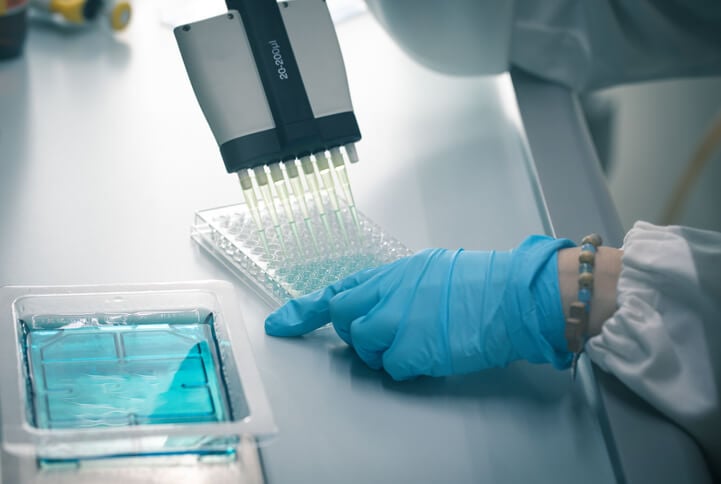HRP stands for horseradish peroxidase, an enzyme derived from horseradish. Streptavidin is a protein derived from a species of bacteria in the genus streptomyces. Streptavidin has a high affinity for the molecule biotin. Streptavidin HRP is a streptavidin protein conjugated to HRP. HRP is used for detection/read out signals in an assay such as ELISA. Depending on which substrate you give the HRP, the enzyme will produce a different signal that you can read out with whatever hardware/technology you have in your laboratory. Let’s discuss the general protocol for using streptavidin HRP and the various substrates you can use to get an output.
General Streptavidin HRP protocol for ELISA
There are two ways to begin a streptavidin HRP ELISA. Either antibody or antigen is bound to the surface of a well in an ELISA plate.
If antibodies are adsorbed on the surface, next the solution containing your antigen is put into the well and given time to bind the antibodies. For the detection step, a detection antibody which is pre-conjugated to biotin is allowed to bind to the antigen. Next your HRP conjugated streptavidin binds with high affinity to the biotin. Lastly, you introduce a substrate into the well to create an enzymatic reaction that leads to some kind of signal output you can measure or see.
If antigens are adsorbed on the surface, then the next step is allowing the detection biotin conjugated-antibody to bind the antigen. Then the HRP-streptavidin binds to the biotin with high affinity. Lastly, a substrate is introduced to induce an enzymatic reaction of the HRP to create a signal output.
Types of substrates for Streptavidin HRP assays
Chemiluminescent ELISA with streptavidin HRP
You might have already read about luminol based substrates for chemiluminescence in our article "chemiluminescence examples". Using luminol or a derivative of luminol as a substrate for enzymatic activity by HRP, you get a chemiluminescent reaction. Commercially sold luminol solutions will often have enhancer molecules to create a greater signal. You can get an image of the light emission from this reaction using a commercially available imager or scanner.
Chromogenic ELISA with streptavidin HRP
Chromogenic substrates, such as TMB can also be used to visualize your ELISA. TMB is sold commercially and turns blue when mixed with an HRP enzyme.
Fluorescent ELISA with streptavidin HRP
You can also use a fluorescent substrate with HRP. Fluorescent substrates require a fluorometer for readout but are sometimes preferred due to their strong signal and dynamic range.
Magnetic Beads for strepavidin HRP
To isolate/detect proteins you can also use magnetic beads. Many laboratories are switching to magnetic beads because of the simple protocol and the high yield it has. Magnetic beads can play various roles in these assays. The magnetic bead can serve as the molecules binding the initial antibody as a support or it can be part of the detection system. Overall the streptavidin HRP combination is a powerful one, taking high affinity binding and combining it with an array of detection capabilities. This technology is getting better and more sensitive as more companies develop and optimize it.
Related news
- Preliminary considerations for CLIA design
- Protein assay
- Limitations and perspectives of Chemiluminescent immunoassay (CLIA)





